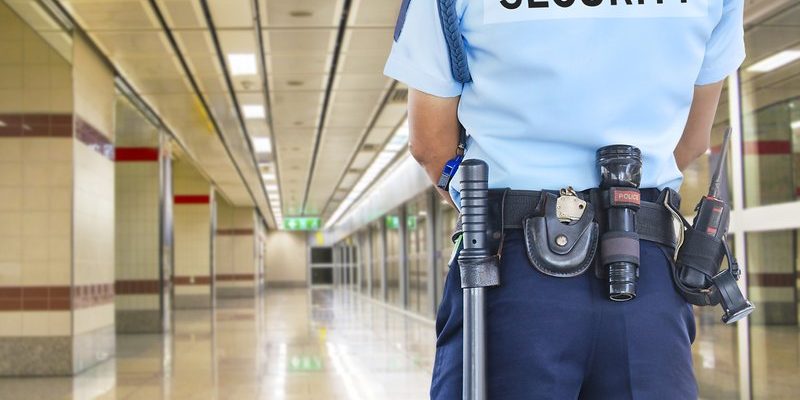
Ring, a brand many know from their video doorbells, designed its smart remote to be not just convenient but tough for strangers to crack. If tech security seems confusing, don’t sweat it—think of this device’s defenses as layers, like a well-made lasagna (minus the cheese and tears). You might not see every ingredient, but each one helps stop unwanted surprises. Let’s walk through the main ways the Ring Smart Remote keeps your home—and your peace of mind—locked down tight.
Encrypted Communication Protects Your Commands
Every time you press a button on your Ring Smart Remote—maybe to turn off your alarm or sync it with a camera—a message zips through the air to your Ring base station or device. What happens in that split-second is a little like sending a secret code in class: the remote scrambles the message into gibberish, and only devices with the matching “decoder ring” can make sense of it. This process is called end-to-end encryption.
Here’s the thing: encryption means that even if someone tries to eavesdrop on the signal, all they’ll get is digital nonsense. Ring uses industry-standard protocols (think AES-128 or AES-256), which are pretty much the Fort Knox of wireless communication. Unless someone has the exact, unique key your devices use to talk, they’re out of luck.
Honestly, this is non-negotiable in 2024—any remote worth owning needs encryption. If you’ve ever worried someone could “sniff” your signal while you’re pairing new devices or hitting the reset button, encryption is the reason you can relax. It’s not flashy, but it’s what keeps your home’s system from turning into an open party line.
Two-Step Authentication (2FA) Stops Unauthorized Access
Pairing a Ring Smart Remote with your Ring account isn’t just a matter of pressing sync and crossing your fingers. The system adds what’s called two-step authentication (or 2FA). Think of this as needing both a password and a one-time verification code—sent to your phone or email—before you can add, reset, or seriously tinker with your Ring setup.
Why does this matter so much? Well, suppose you lose your remote, or someone tries to pair a rogue one with your account. With 2FA, they can’t do it without having access to that second code, which (if you’ve set it up right) only you should have. Even if someone figures out your password (maybe you wrote it on a sticky note—we’ve all been there), they still need the temporary code.
You might be wondering if this gets annoying. In practice, you only deal with 2FA when making big changes—like pairing new devices or troubleshooting a problem. It’s a small, occasional speed bump, but it stops a ton of would-be troublemakers. Compared to universal remotes or some older smart remotes, which skip 2FA entirely, Ring’s approach is a big leap forward for home security.
Secure Pairing and Sync Process Blocks Imposters
If you remember the days when a neighbor’s garage door opener would mess with your own, you get why secure pairing is a big deal. When you first connect your Ring Smart Remote to your system, it’s not just a mindless handshake—it’s a tightly orchestrated dance. The remote and your base station swap unique codes, make sure they match, and create a private channel that only those two devices can use.
This step is harder for hackers to break than just guessing a PIN code. After all, you want to prevent someone from walking by your house and “cloning” your remote using a simple device. Ring’s remote uses a process called rolling codes, meaning the code changes every time you press a button—kind of like a lock that invents a brand-new key each time you use it. Even if someone captures the signal, it’ll be useless in a few seconds.
Here’s a quick story: I once tried pairing a Ring Smart Remote for my parents, and I thought I could rush the process. Nope. The system forced me to confirm with both a physical button and a security code from their account. Annoying? A tiny bit. But after seeing the hoops I had to jump through, I actually felt better about leaving their house protected.
Device Reset Requires Physical Access and Verification
Sometimes you want to start fresh—maybe your remote isn’t responding, or you bought a used one and need to wipe its memory. With Ring’s smart remote, resetting isn’t as simple as just holding any button. The process requires you to press a hidden combination (often involving holding two buttons for a set number of seconds) and, crucially, you often need physical access to the base station or main Ring app to finish the reset.
This double-check does two things. First, it stops random “drive-by” resets—no one can mess things up from outside your house. Second, it ensures only someone who actually holds the remote and has account access can perform a full factory reset. That adds an extra hurdle against hacking or misuse, especially if you ever have to troubleshoot a stubborn bug or battery issue.
Picture this: you’re moving out and want to erase your info. Even if someone finds your old remote in a drawer, they can’t just reset and pair it without your say-so. Compared to generic universal remotes, where a hard reset is often just a paperclip away, Ring’s approach is a big win for privacy and security.
Automatic Updates Patch Security Vulnerabilities
No piece of tech is perfect forever—not even the Ring Smart Remote. That’s why Ring regularly rolls out automatic firmware updates for its remotes and connected devices. These updates can fix bugs, close up loopholes, and add new security features. You might not notice them happening, since most updates install quietly during off-hours.
Let me explain why this matters. Say a researcher finds a new way hackers might try to intercept remote codes. Instead of leaving you at risk, Ring can push a software fix directly to your remote and system. It’s almost like having a mechanic tune up your car overnight, without you lifting a finger.
A lot of people ignore updates—they seem annoying or unnecessary. But honestly, skipping them is like locking your front door but leaving the windows wide open. Automatic updates mean you don’t have to remember to patch your own system. Ring designs this process so your remote keeps working seamlessly, but behind the scenes, it’s getting smarter and safer all the time.
Physical Security: Tamper-Resistant Design
Security isn’t just about fancy code or apps—it starts with the hardware itself. The Ring Smart Remote is built to resist casual tampering. The battery compartment, for example, is secured with a tiny screw or a locking latch, so it’s not easy for just anyone to remove the battery and mess with the internals.
If you drop your remote in the driveway or a curious visitor picks it up, they can’t just pop it open and tinker. And even if someone tries to force the device apart, there are internal mechanisms designed to wipe sensitive memory if tampering is detected. This means that, even if the remote falls into the wrong hands, your home’s codes and sync info stay safe.
It might seem like overkill, but think about how often house keys get lost or copied. With a smart remote, you want the digital version of “do not duplicate.” Ring’s design choices here mean a lost remote is more inconvenience than crisis—no need for a full system replacement.
Secure Troubleshooting and Customer Support Processes
Something will go wrong. Maybe your Ring Smart Remote won’t pair, or you’re stuck in a code-reset loop. Here’s where support becomes a security feature. When you contact Ring’s help team or use their troubleshooting tools, they’ll ask you to verify your identity (with info only the account holder should know) before making any high-stakes changes.
This may sound like busywork, but it’s the digital version of checking your ID before handing over spare keys. Even experienced users run into pairing issues or battery glitches, and a strong support protocol makes sure only real users—not random callers—get system access. If you ever request a remote reset or need to sync a new device, you’ll go through a checklist that blocks anyone from hijacking your setup.
Compared to some universal or off-brand remotes, where a single phone call might unlock everything, Ring’s process is a bit more thorough—and that’s a good thing. The extra steps can feel slow, but in security, slow and careful beats fast and sloppy every time.
Comparing Ring Smart Remote Security to Other Options
Here’s the bottom line: not every smart remote takes security this seriously. Universal remotes or lower-end smart brands often skip encryption, have clunky reset processes, or use old, static codes. This means a clever hacker—or sometimes just a nosy neighbor—could potentially copy signals or break into your system with the right tools.
With Ring, every feature—from encrypted code transmission to two-factor pairing—works together like parts of a good security system. It’s not about one magic trick; it’s layers of protection. And while no device is bulletproof, stacking these layers makes your home a much tougher target.
You might be tempted by cheaper or more generic remotes. But ask yourself: Is that worth the risk? Ring’s remote isn’t perfect (nothing is), but it’s designed with today’s real-world security needs in mind. If you want your digital keys to be as safe as your physical ones, it’s a solid choice.
Strong security isn’t about being paranoid—it’s about knowing your tools are working as hard as you are. The Ring Smart Remote brings serious defenses without making you jump through endless hoops every time you want to turn on your lights.
When you rely on a device to manage your home’s security, you deserve to know every layer that has your back. The Ring Smart Remote backs up its convenience with tough, thoughtful features that keep both hackers and accidents at bay. It’s one less thing to worry about—so you can get back to using technology for what it’s supposed to do: making life a little simpler and a lot safer.
